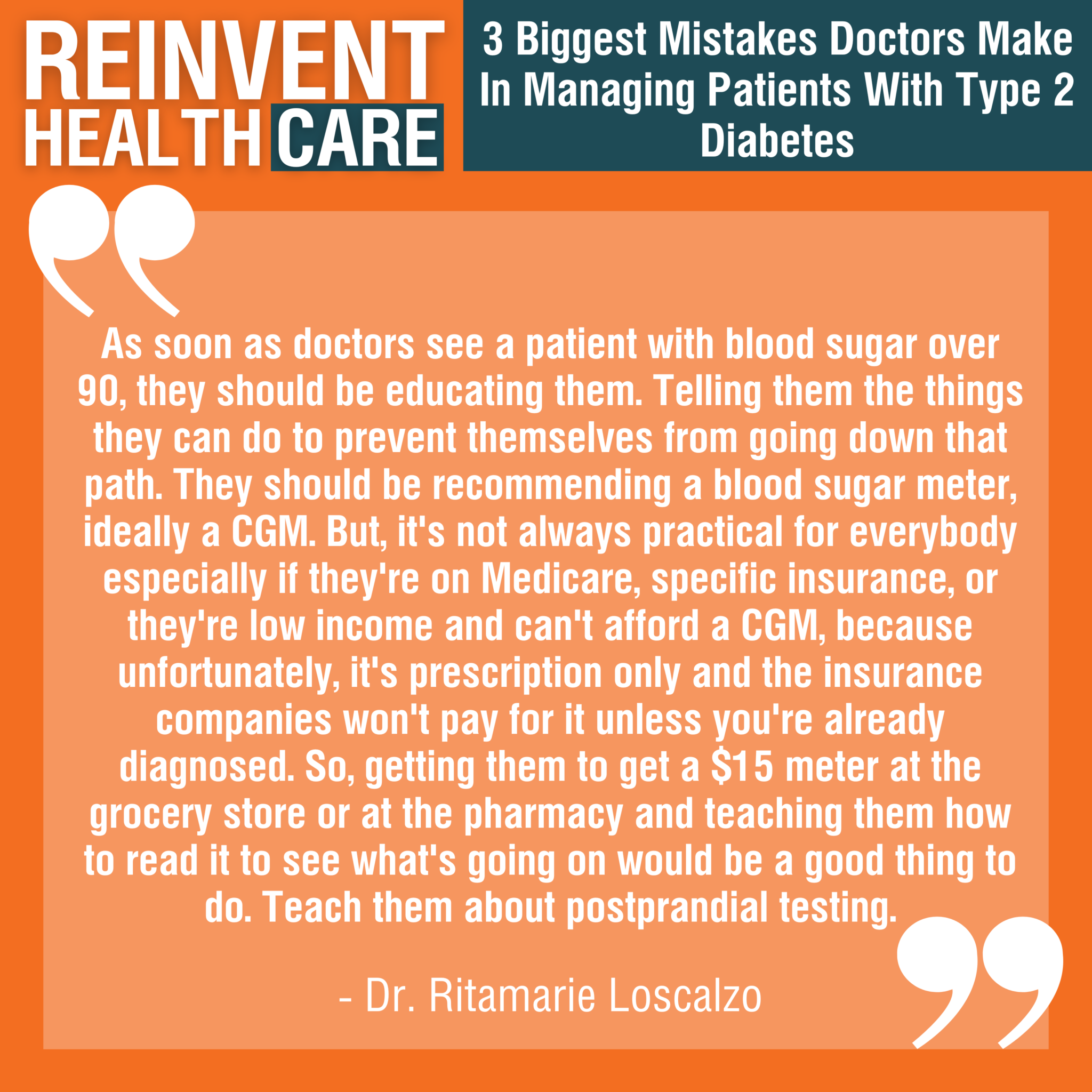3 Biggest Mistakes Doctors Make In Managing Patients With Type 2 Diabetes
IN THIS EPISODE:
Testing Inappropriately
One major mistake is inadequate testing for pre-diabetes and early signs of insulin resistance. When blood sugar levels consistently go above 90, it indicates a higher risk of insulin resistance and cardiovascular disease. However, many healthcare professionals only focus on diagnosing diabetes when A1C is at 5.7, which is an average of 119. Testing should include postprandial (after meals) glucose levels and early morning glucose readings, and individuals should be educated about using blood sugar meters or continuous glucose monitors (CGMs) to monitor their levels regularly.
Neglecting A1C Monitoring
A significant oversight is the lack of routine monitoring of A1C levels, which provide an average blood sugar level over several months. While the medical community often considers an A1C under 5.7 as normal, this overlooks the nuances. A healthier range is suggested to be between 4.8 and 5.2. By monitoring A1C levels and understanding their relation to average glucose levels, individuals at risk can take preventive measures to manage their blood sugar levels.
Overlooking Insulin Testing
Insulin is a fat storage hormone that should be tested as a part of the annual exam. Many doctors do not routinely test fasting insulin levels, which should ideally be between two and five, or even better, two and three. Elevated fasting insulin levels can contribute to health issues like hypertension and cardiovascular disease. Addressing insulin levels early can help prevent further complications.
References:
- Get our FREE Guide to Taking a Detailed Health History that gets you to root causes
- Access Additional Resources for Practitioners ready to improve clinical outcomes through our Nutritional Endocrinology Practitioner Training.
- Check out our other episodes about Functional Food Facts here.
- Check out my free guide on Fasting here.








